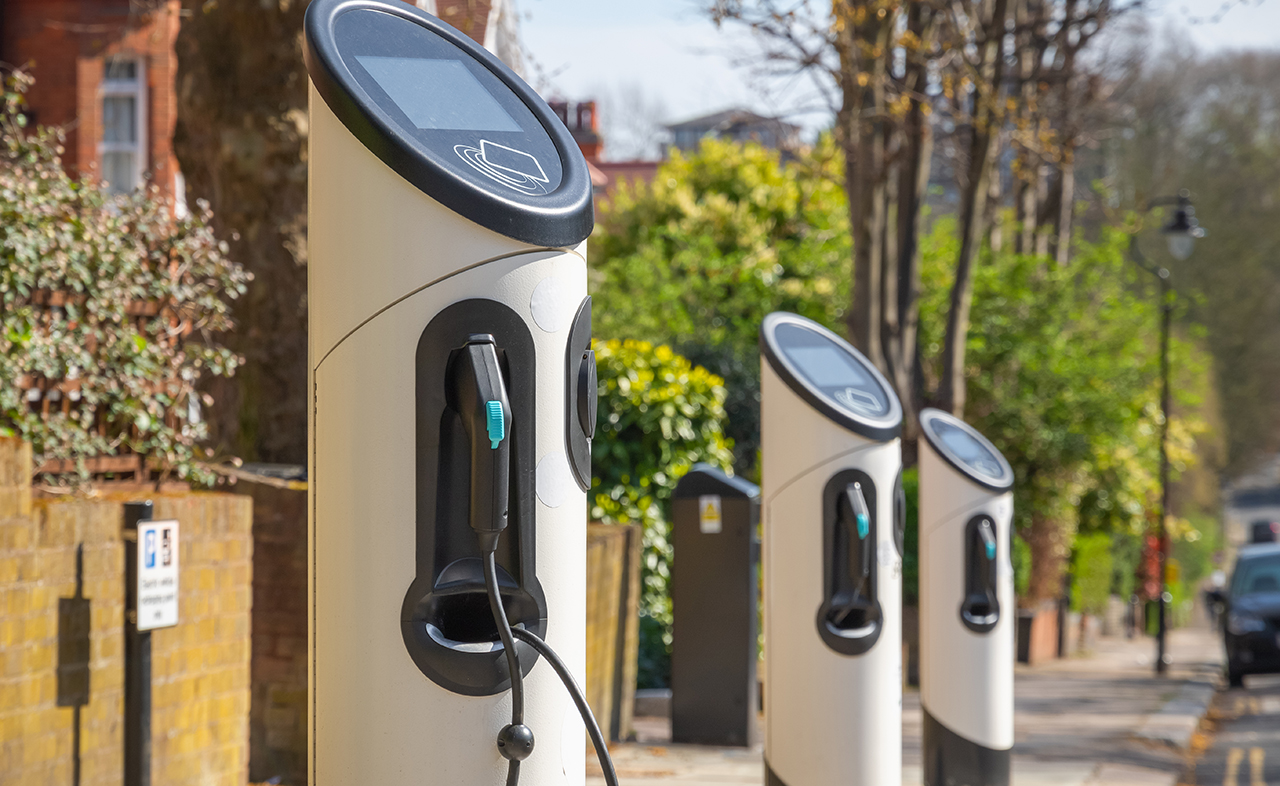IoT in transportation use cases is growing rapidly, delivering gains in operational efficiencies, cost savings, safety, security and mobility. The impact of IoT is anticipated to be enormous as cities and municipalities around the world incorporate wireless technology into
traffic management,
emergency response and safety for pedestrians and bicycles.
Public transportation services will also improve, and the automotive industry will benefit from a range of innovations made possible with IoT, from EV charging stations to connected vehicle technology.
In this post we will look at some specific IoT applications in transportation from the Digi collection of customer success stories, such as Positive Train Control (PTC), vehicle analytics, ticketing systems, transit system security and high-speed passenger Wi-Fi.
Incorporating IoT in Transportation Systems
 Technology advances are driving the application of IoT in transportation applications that make cities smarter and the city's systems easier to manage, both for fixed and mobile applications.
Technology advances are driving the application of IoT in transportation applications that make cities smarter and the city's systems easier to manage, both for fixed and mobile applications.
In fixed applications such as traffic lights, cameras and intersection management, the reliability of cellular networks now rivals traditional wired networks, creating opportunities that did not exist only a few years ago. And it is far less costly to implement.
And for applications such as police, fire, ambulance, bus, light rail and paratransit vehicles, mobile router technology has advanced dramatically in recent years, while networks have improved in both speed and capacity with the rapid growth of 4G networks and the advent of 5G.
As a result of these advances, IoT solutions for transportation meet a growing range of needs, in a variety of operating conditions. Some of th key transportation IoT use cases today include the following:
- Traffic management: IoT applications for urban traffic management improve both safety and traffic flow, and help cities get the maximum value from their infrastructure spending.
- Public transportation: Transit IoT applications enable transit agencies to operate more efficiently while improving the passenger experience with amenities such as informational signage and high-speed Internet connectivity.
- Electric vehicles and EV charging: The number of electric cars and EV charging stations are growing rapidly. The entire EV infrastructure will rely on IoT connectivity for system maintenance, payment processing and more.
- Railways: IoT solutions support both light rail and heavy commercial rail systems, and Digi is leading the way with high-performance 5G mobile access routers for reliable and secure high-speed communications and geo-positioning — even in tunnels and urban canyons.
- Trucking/logistics: Fleet managers can track vehicle analytics, reduce the need for truck rolls, and automate processes to save operational costs - including the monitoring and reporting of truck refrigeration.
Let's look at some examples of IoT in transportation.
Example 1: Traffic Management
 Intelligent Transportation Systems (ITS), also called Smart Traffic Management Systems (STMS), do this by connecting sensors, cameras and other traffic monitoring technology with traffic control systems such as traffic lights, dynamic messages boards and in-vehicle communication and warning systems.
Intelligent Transportation Systems (ITS), also called Smart Traffic Management Systems (STMS), do this by connecting sensors, cameras and other traffic monitoring technology with traffic control systems such as traffic lights, dynamic messages boards and in-vehicle communication and warning systems.
Here are some of the problems that IoT for traffic management can address:
- Congestion: Traffic jams waste both time and fuel, as streets and roads built more than a century ago are forced to carry unprecedented volumes of traffic.
- Safety: The majority of collisions occur at intersections, where better signal control could create smoother, safer, more predictable traffic flow.
- Pollution: Motor vehicle emissions can be reduced significantly by traffic management systems that enable cars and trucks to spend less time idling in traffic.
- Emergency response: Emergency vehicles including police, fire and ambulance need to take priority regardless of the traffic conditions.
Here are some of the use cases that successfully incorporate IoT for traffic management.
Traffic Management in the Nation’s Busiest Urban Environment
New York City is one of the most dense urban environments in the world, with traffic signals located at thousands of intersections. All of these signals need to be coordinated in real time to provide a smooth, safe flow of traffic at all hours of the day or night in the “city that never sleeps.”
 When New York recently needed to upgrade connectivity on more than 14,000 traffic signals, it chose Digi WR54 dual cellular routers for use at each intersection, along with the Digi Remote Manager® platform for device configuration and management. Once deployed, the city’s Department of Transportation was recognized as the Outstanding ITS Project of the Year – Traffic Management Systems by the Intelligent Transportation Society of New York (ITS-NY) for the project. The New York City Wireless Infrastructure Network (NYCWIN) provides a citywide communication backbone to all ITS devices, including traffic cameras, variable message signs (VMS), vehicle detection devices and more.
When New York recently needed to upgrade connectivity on more than 14,000 traffic signals, it chose Digi WR54 dual cellular routers for use at each intersection, along with the Digi Remote Manager® platform for device configuration and management. Once deployed, the city’s Department of Transportation was recognized as the Outstanding ITS Project of the Year – Traffic Management Systems by the Intelligent Transportation Society of New York (ITS-NY) for the project. The New York City Wireless Infrastructure Network (NYCWIN) provides a citywide communication backbone to all ITS devices, including traffic cameras, variable message signs (VMS), vehicle detection devices and more.
FirstNet Ready™ to Enhance Emergency Preparedness
 FirstNet® is a nationwide wireless network that delivers priority, pre-emptive communications for first responders and critical infrastructure in case of a large-scale emergency, such as a hurricane, wildfire or other event that affects an entire city or region.
FirstNet® is a nationwide wireless network that delivers priority, pre-emptive communications for first responders and critical infrastructure in case of a large-scale emergency, such as a hurricane, wildfire or other event that affects an entire city or region.
FirstNet Ready™ devices such as the Digi WR54 cellular routers that were used in New York’s infrastructure project, as well as the new Digi TX54, help ensure critical voice, text and data communications whenever a spike in civilian cell phone use could jam cellular networks, preventing dispatchers and first responders from communicating with each other.
Example 2: IoT in Public Transportation
 IoT solutions are used in a multitude of transit applications for bus, light rail and paratransit. IoT applications can be used for multiple systems:
IoT solutions are used in a multitude of transit applications for bus, light rail and paratransit. IoT applications can be used for multiple systems:
- Routing and dispatch
- Vehicle engine monitoring
- Real-time security cameras
- Passenger Wi-Fi
- Digital signage
Here are some examples of the capabilities and benefits of IoT for transit.
Transit Capacity Monitoring and Management
The Chicago Transit Authority (CTA), facing unprecedented variations in ridership levels because of the Covid pandemic, embraced innovative IoT solutions in a pilot program along one of its busiest bus routes. The CTA used a variety of passenger-counting technologies together with sophisticated analytics and predictive modeling for proactive demand management.
Every bus in the pilot was outfitted with a Digi WR54 mobile access router to communicate with onboard occupancy sensors and systems. Data was analyzed to create projection models for proactive transit demand management. The routers themselves were monitored and managed using Digi Remote Manager®, Digi’s cloud-based networking platform. Digi Remote Manager provided complete visibility across all devices through visual dashboards of performance and status metrics.
Passenger Ticketing and Information System
 Secure, convenient ticketing is vital to the success of any transit system. Digi has several customers that develop IoT applications in this space. For example, TransData is an IoT systems integrator that develops payment and identification applications for public transit in Slovakia. TransData ticketing and information systems require superior video performance, Wi-Fi and Bluetooth, and connectivity to the transit vehicle’s data system and cellular modems. The company’s flagship product is a multi-faceted solution that supports a broad range of capabilities, including:
Secure, convenient ticketing is vital to the success of any transit system. Digi has several customers that develop IoT applications in this space. For example, TransData is an IoT systems integrator that develops payment and identification applications for public transit in Slovakia. TransData ticketing and information systems require superior video performance, Wi-Fi and Bluetooth, and connectivity to the transit vehicle’s data system and cellular modems. The company’s flagship product is a multi-faceted solution that supports a broad range of capabilities, including:
- Secure fare transactions
- Easy-to-use electronic card system simplifies passenger experiences
- GPS-tracked route guidance to minimize delays
- Digital signage to promote local shops, restaurants and points of interest
- High-speed passenger Wi-Fi for reliable Internet access
These applications are enabled by the ultra-compact Digi ConnectCore® system-on-module (SOM), which supports TransData connectivity requirements at an affordable price. The Digi ConnectCore® 6 can withstand punishing conditions such as extreme heat, humidity and vibration while maintaining reliable network connectivity.
Public Transit System Computer-Aided Dispatch
The Detroit-based Suburban Mobility Authority for Rapid Transit (SMART) operates a metro bus fleet of 330 biodiesel and hybrid-electric buses covering more than 1,100 route miles and carrying 32,000 riders daily. With this large fleet, it is critical to monitor the vehicles in order to ensure the highest levels of passenger safety and on-time performance.
SMART needed to upgrade an aging Computer-Aided Dispatch (CAD) / Automatic Vehicle Location (AVL) system, which was built on a legacy analog radio network connected via three leased towers. SMART first considered migrating from analog to digital and increasing the number of towers, but that approach was cost-prohibitive. Ultimately SMART switched to VOIP on cellular for CAD, taking advantage of the packet priority services built into the Digi WR44 R mobile cellular router (as well as its successor, the Digi TX54).
With its switch to a cellular-based AVL, SMART can now collect and analyze a much wider range of data and metrics — including vehicle location and speed — in real-time. Maintenance data is also captured to help prevent breakdowns and accelerate repair cycles. Data is transmitted to the transit operations center through a highly secure VPN tunnel, while operators can communicate with Central Dispatch using VoIP handsets. Thanks to these upgrades and enhancements, the SMART team estimates that they are saving over $70,000 per year.
Example 3: Electric Vehicles and EV Charging
 As the world’s auto industry shifts over to electric vehicles (EVs) in the coming decades, a dense infrastructure of EV charging stations will grow along with the fleet of new electric cars, buses and trucks. IoT is essential in enabling our EV infrastructure to scale up to meet the demand. We can expect to see EV charging stations built along every major highway. Workplaces, apartment complexes and shopping and entertainment venues will be retrofitted to offer convenient vehicle charging.
As the world’s auto industry shifts over to electric vehicles (EVs) in the coming decades, a dense infrastructure of EV charging stations will grow along with the fleet of new electric cars, buses and trucks. IoT is essential in enabling our EV infrastructure to scale up to meet the demand. We can expect to see EV charging stations built along every major highway. Workplaces, apartment complexes and shopping and entertainment venues will be retrofitted to offer convenient vehicle charging.
EV charging stations will require IoT connectivity for a range of functions. IoT applications will be used to inform drivers who are who are seeking the location of a charging station, to communicate with charging system owners or managers and, of course, for billing and payment purposes. Digi embedded systems will be at the heart of many of these applications.
AddÉnergie EV Charging
AddÉnergie, a company based in Quebec, Canada, develops, manufactures and operates EV charging stations for public and private sector markets, including infrastructure for the two largest charging networks in Canada, VERnetwork™ and the Electric Circuit. AddÉnergie provides EV drivers and charging station owners with access control, energy management and payment services, including an application to send emails to notify drivers when charging is complete. The solution also provides a preventative maintenance capability for operators, allowing them to monitor every charging station, and in some cases, fix problems remotely.
AddÉnergie selected Digi technology, including Digi XBee® wireless modules and cellular gateways, for its ability to “communicate in a busy, urban environment.” The solution helps provide a seamless user experience and also allows network providers to easily monitor all activity.
Aging City Buses Reborn with IoT
Reborn Electric, an engineering company based in Santiago, Chile, takes diesel-powered buses that have reached the end of their service life and retrofits them with battery-powered electric motors. Converting to zero-emission electric power is a “green tech” solution that greatly extends the life of the vehicles while reducing air pollution in the city. To modernize the vehicles’ onboard electronics, Reborn selected the Digi ConnectCore single board computer (SBC), which provides telemetry to monitor vehicle routes, track power consumption and gather data for predictive maintenance.
Example 4: Railway Communications and PTC
Train control and real-time communications are critical for railway systems and the IoT applications for this segment of the transportation industry are growing rapidly to serve this mission-critical sector.
GNSS Dead Reckoning
One important capability made possible with IoT is untethered dead reckoning (UDR), which enables far more sophisticated and accurate positioning than is possible with standard GPS. The Digi TX64 5G and TX64 5G Rail cellular routers include a GNSS dead-reckoning module that uses inertial sensor data to maintain continuity whenever something is blocking the GPS signal, for example, when a vehicle is going through a tunnel or underneath an overpass.
Positive Train Control
The Southern Pennsylvania Transportation Authority (SEPTA), which provides light rail, subway and bus service in and around Philadelphia, was one of the first transit systems to install Positive Train Control (PTC), a sophisticated train-signaling system designed to prevent crashes, derailments and track worker injuries resulting from speed and signal violations.
SEPTA worked with Digi to deploy the right connectivity solution for PTC:
- The Digi® WR44-RR mobile access router (recently replaced by Digi TX64 5G Rail)
- PTC message routing and wireless communications via a Mobile Communications Package (MCP)
- An integrated, drop-in MCP assembly that houses Digi WR44 RR, a 220 MHz TDMA radio, power supply and RF filters
Locomotives and other vehicles use the Digi WR44 RR to relay PTC data messages to and from waysides via 220 MHz radio. The Digi WR44 RR (and its successor, Digi TX64 5G Rail) enables remote system maintenance, configuration and network management over a cellular link, providing increased network reliability and rail system visibility. The SEPTA system extends performance beyond PTC toward full Communications-Based Train Control (CBTC), resulting in more efficient scheduling, greater capacity and fuel savings.
Download our PTC White Paper
Learn more about the growing role of cellular in meeting the PTC mandate
Download PDF
Summary
Transportation companies and agencies around the world are adopting IoT solutions to improve safety, performance and cost effectiveness, as well as comfort and convenience for passengers and motorists. A complete set of Digi IoT solutions satisfy a range of needs in virtually all aspects of surface transportation.
In addition, the Digi has expert teams ready to provide guidance, planning, and design or deployment services. Digi Wireless Design Services provides support to developers and OEMs who are designing products and need experts to support their prototyping, PCB layout, antenna design and go-to-market needs. The Digi Professional Services team supports governments and other organizations who are planning network connectivity and infrastructure upgrades to transform their operations.
For more information about Digi IoT solutions for transportation, contact us today.
Note: This blog was initially published in 2018 and was updated in 2022.